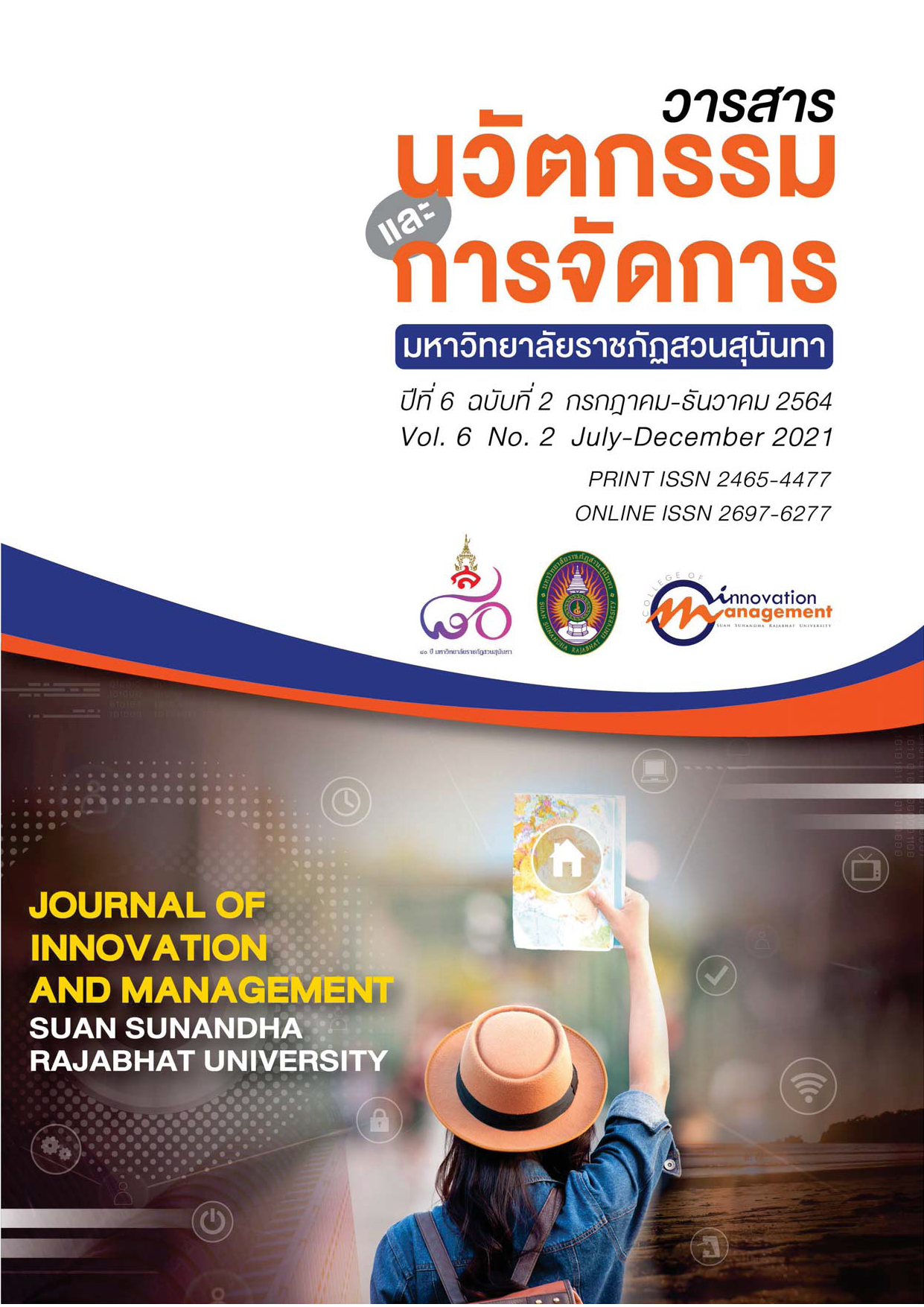The Strategy for Promoting Gastronomy Tourism in Thailand Riviera
Keywords:
Strategy for Promoting Tourism, Gastronomy Tourism, Thailand RivieraAbstract
This research study aims to study Strategy for Promoting Gastronomy Tourism on Thailand Riviera in using qualitative research. The result found that there are consists of 4 approaches: 1) Aggressive strategy; set a policy to develop infrastructure and transportation systems, to encourage of production for saving agricultural food products, to encourage gastronomy tourism activities in diversity areas, to encourage, to push and to enhance local food festivals, to encourage Full-scale border trade tourism, to develop commercial airports with potential and presenting local souvenir shops within the airport, to encourage investment of information technology 2) Defensive strategy; to develop local service processes, to develop logistics and transportation systems, to encourage investment in the area, to encourage food production and community agricultural tourism and upgrading food traditions, to establish a tourist service center specializing in food tourism in the province 3) Turnaround strategy; to develop transportation system, to support of public relations project, planning for the tourism service industry in the future, to enhance and develop service skills for personnel and people in the area, to establish a promotion center Conservation of wisdom, processes, local food processes and the modeling health food tourism activity 4) Retrenchment strategy; to develop transport infrastructure to enter the food tourism area, to organize gastronomy tourism activities by promoting marketing, developing of service, planning of the festival calendar, and establishing a community food distribution center.
References
Chaichana, S. (2005). Potential of Thai wisdom on local food in the lower north. Bangkok: Kasetsart University.
Chang, W. (2011). A Taste of Tourism: Visitors' Motivations to Attend a Food Festival. Event Management, 15(2), 151-161.
Chimbanrai, H. (2015). Potential of Local Food and Guidelines for Tourism Promotion through local food of Nan Province. Journal of International and Thai Tourism, 11, 37–53.
Department of Health, Ministry of Public Health. (2013). Food sanitation requirements for food stalls. [Online]. Retrieved from: http://foodsan.anamai.moph.go.th/main.php?filename=stand.
Department of Tourism, Ministry of Tourism and Sports. (2016). The Second National Tourism Development Plan (2017-2021). Bangkok: The Office of Printing Affairs, the War Veterans Organization of Thailand.
Department of Local Administration, Ministry of Interior. (2006). Standard of Tourism Promotion. [Online]. Retrieved from: http://www.dla.go.th/work/e_book/eb1/std210550/22/22.htm.
Hall, C. M., and Sharples, L. (2003). The consumption of experiences or the experiences of consumption? An introduction to the tourism of taste. In C. M. Hall, E. Sharples, R. Mitchell, N. Macionis and B. Cambourne (Eds.), Food Tourism Around the World: development, management and markets (pp. 1-24). Oxford: Butterworth-Heinemann.
Janthawanich, S. (2016). Qualitative research methods. 23th ed. Bangkok: Chulalongkorn University.
Mak, A. H.N. (2012). Factors influencing tourist food consumption. International Journal of Hospitality Management, 31, 928-936.
Ministry of Tourism and Sports. (2015). Tourism Development Action Plan Within the West Coast Tourism Development Zone 2016–2020. [Online]. Retrieved from: https://www.mots.go.th/ewt_dl_link.php?nid=11583.
Naksawat, N. (2019). Strategic plan for sustainable integrated creative southern food tourism development in Suratthani, Thailand. Sisaket Rajabhat University Journal, 13(1), 17-28.
Phakdee-auksorn, P. (2012). Tourism Motivation Theory and Food Tourism. Journal of Management Sciences, 29(20), 129–148.
Phatcha, P, Phetchanchai, C and Kaosa-ard, C. (2020). Factors affecting tourists’ decision on health tourism in the area Eastern Seaside Province Group. Journal of Innovation and Management Suan Sunandha Rajabhat University, 5, 87–102.
Prasertrattasin, S. (2007). Research Methods in Social Science. Bangkok: Feangfar.
Pothisita, C. (2011). Science and Art of Qualitative Research. 5th ed. Bangkok: Amarin.
Puntien, S., Chantachon, S. and Koseyayothin, M. (2017). Thai Culinary Tourism: An Approach to the Development and Troubleshooting for Tourism Management in Watershed Provinces of Thailand Central Region Based on Creative Economy. Princess of Naradhiwas University Journal of Humanities and social sciences, 5(2), 184-195.
Punturee, P. (2015). Tourist Experience: The Creation of Food Tourism Activities in Thailand. Journal of southern technology, 8(2), 27-37.
UNWTO. (2017). Annual Report 2016. [Online]. Retrieved April 2, 2020, from: http://www2.unwto.org/publication/unwto-annual-report-2016-0.
Wisatmongkol, C. and Nuntasan, A. (2015). Tourism Economic Review, No.2 October–December 2015. [Online]. Retrieved from: https://www.mots.go.th/ewt_dl_link.php?nid=7534.
Downloads
Published
How to Cite
Issue
Section
License
Copyright (c) 2021 Journal of Innovation and Management

This work is licensed under a Creative Commons Attribution-NonCommercial-NoDerivatives 4.0 International License.
See Publication Ethics https://so03.tci-thaijo.org/index.php/journalcim/Ethics






